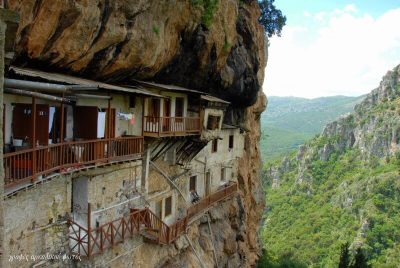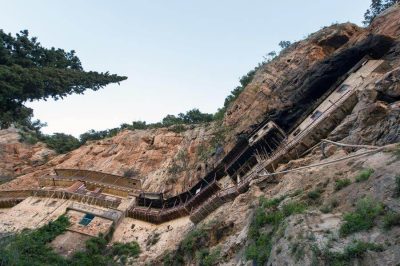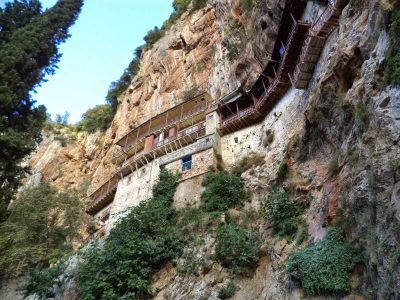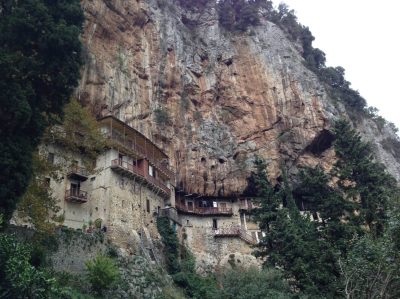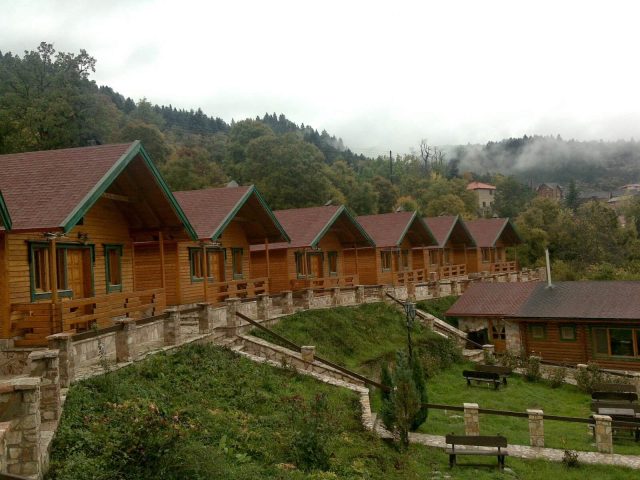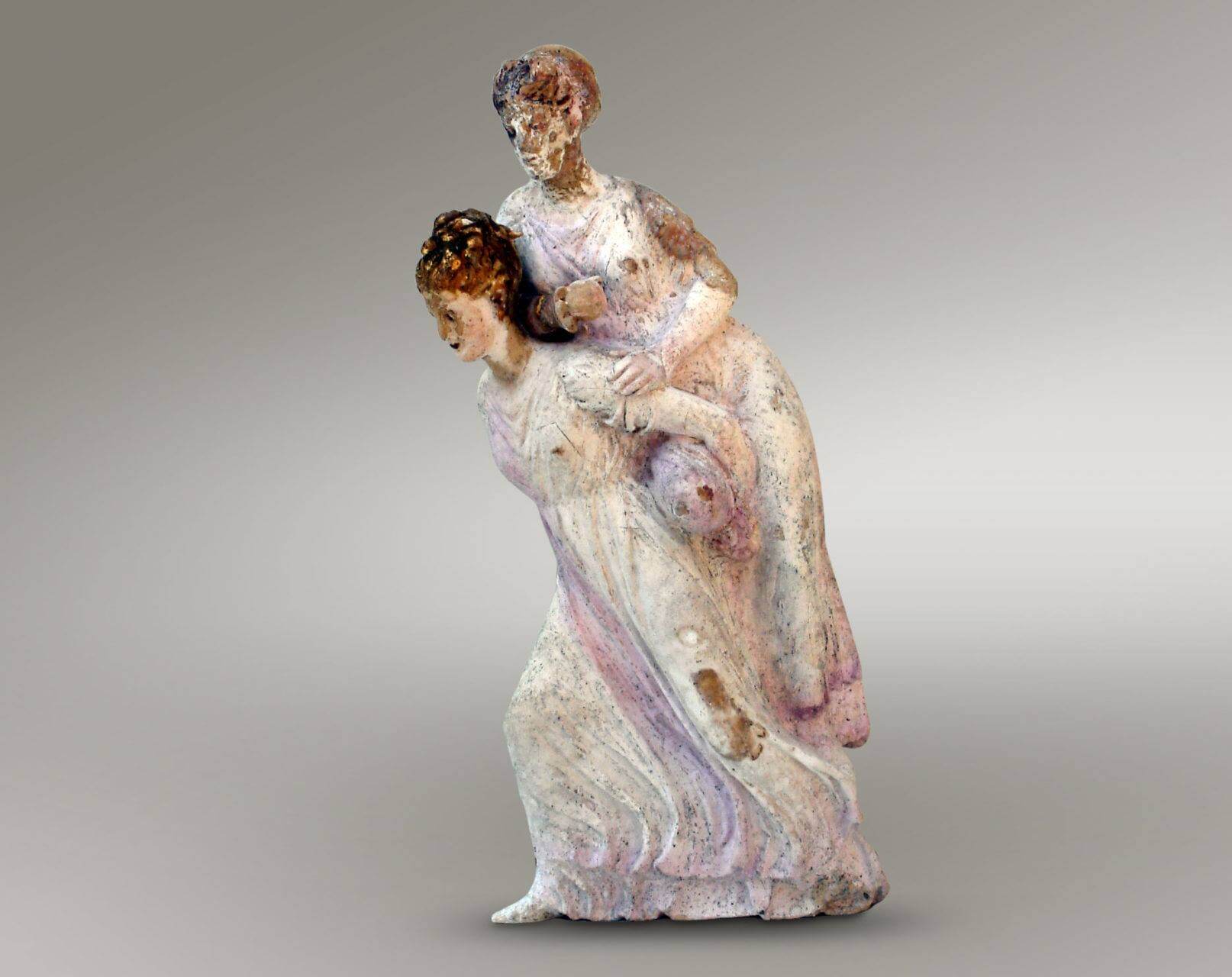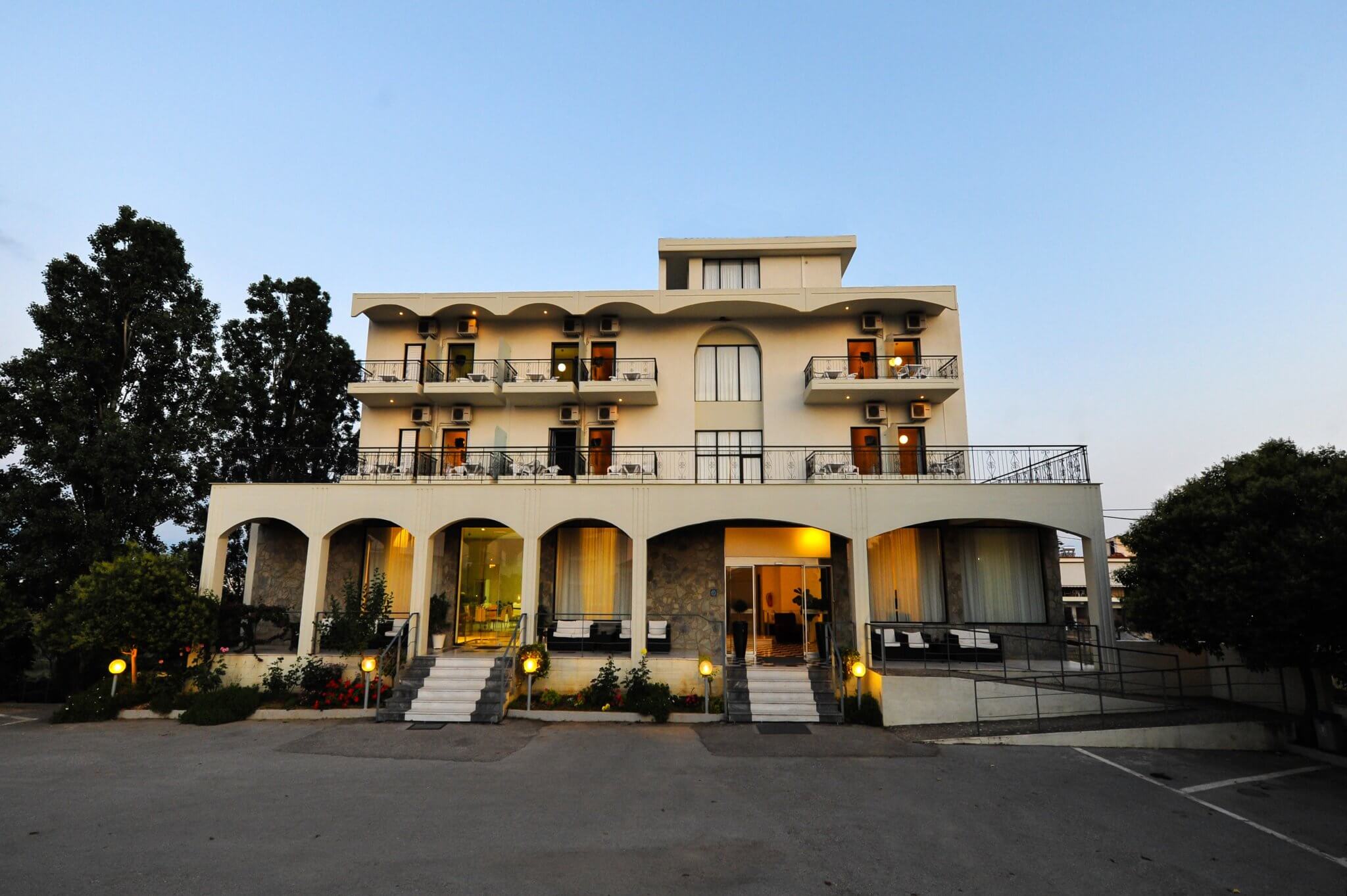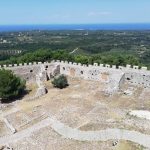The Monastery of Prodromos is built on the root of a cliff on the left side of the ravine Lussius, near the villages of Stemnitsa and Dimitsana (Map D3) (D7 Route). The landscape is impressive and reminds Meteora and the Great Cave.
The church of St. John the Baptist is aisled vaulted basilica and is decorated with remarkable frescoes. Murals are outside the temple magnetizing look every visitor.
This monastery as a priory monastery was probably in the mid 16th century. but since the 12th century. flourished in many hermitages district importantly that of John the Baptist. During the Turkish occupation (16th c.) These retreats are united forming the monastery. Since the beginning of the establishment was stavropegic.
During the revolution of 1821, the monastery became a refuge and hospital for the fighters. In 1834 the monastery was dissolved due to a decree dissolving the monasteries, which are below 7 monks. But 1838 repopulated the monastery and became a great physical and spiritual.
Today the monastery operates a painting workshop and sewing holy garments and there is a remarkable collection of about 1000 books. The monastery of Prodromos, continuing the old traditions, a religious and cultural center of the region.
The number of visitors who flock each year is huge, because apart from spiritual exaltation, offering the monastery is built in a landscape of indescribable beauty, on towering rocks in lush vegetation and below sound the hum of waters of river Lucius.
Its possession are old documents, sigillia Patriarchs, purchases and donations bonds, while the code of the monastery is located in the Library of Dimitsana. The monastery is normally supplied with water and supplied with electricity. From 1976 to 1982 he worked School for oligogrammatous Priests and Monks from which graduated 45.
Unfortunately when the monastery was dissolved in 1834, arrived state step and 16 trucks Animals took valuable movable property of the monastery and the relics of St. Athanasius Christianoupoleos.
Fortunately, the monks managed to preserve 87 bonds dating from 1616 to 1831.



